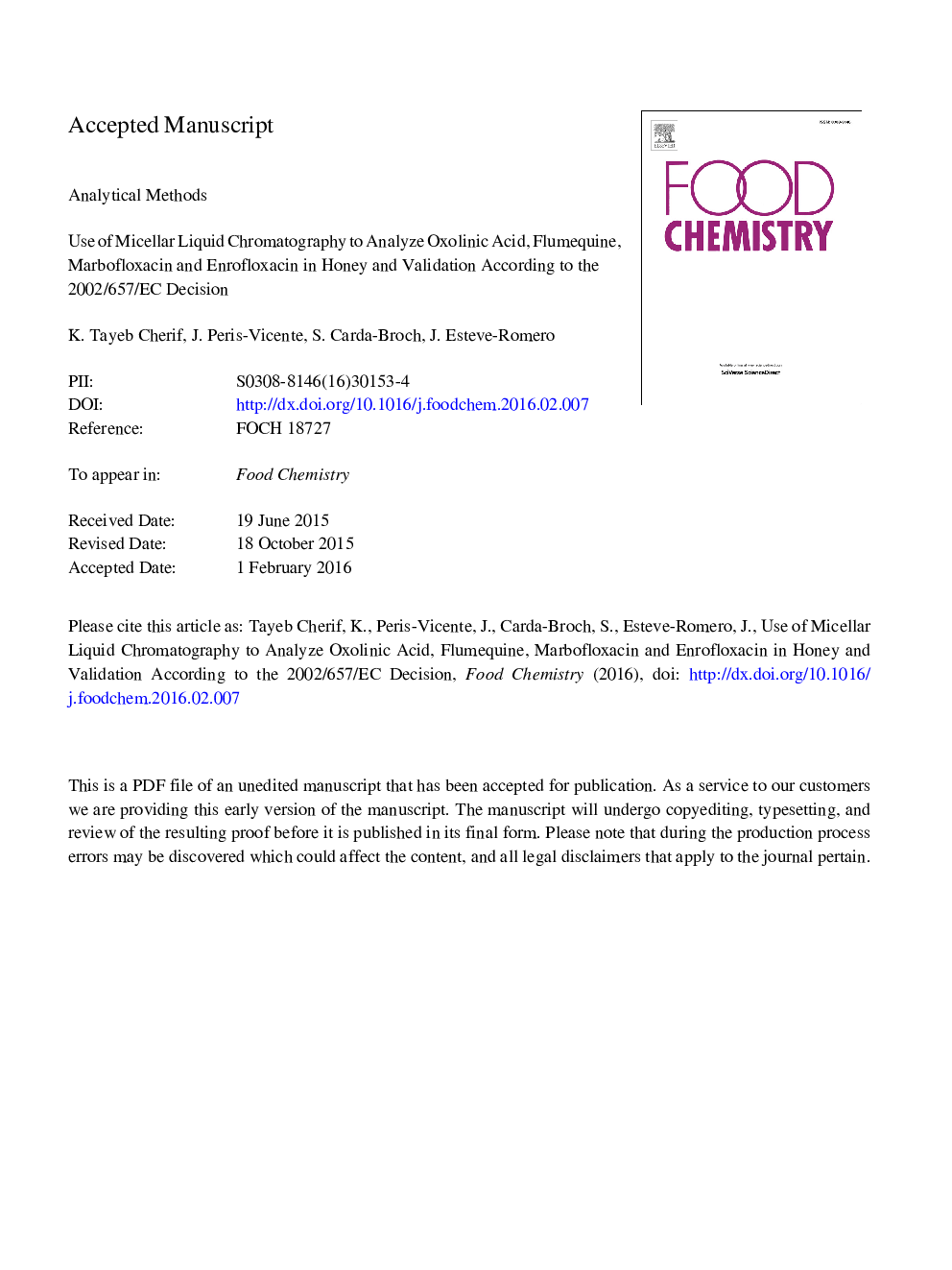| کد مقاله | کد نشریه | سال انتشار | مقاله انگلیسی | نسخه تمام متن |
|---|---|---|---|---|
| 7589495 | 1492090 | 2016 | 35 صفحه PDF | دانلود رایگان |
عنوان انگلیسی مقاله ISI
Use of micellar liquid chromatography to analyze oxolinic acid, flumequine, marbofloxacin and enrofloxacin in honey and validation according to the 2002/657/EC decision
دانلود مقاله + سفارش ترجمه
دانلود مقاله ISI انگلیسی
رایگان برای ایرانیان
کلمات کلیدی
Enrofloxacin (PubChem CID: 71188)1-Propanol (PubChem CID: 1031)Triethylamine (PubChem CID: 8471)Water (PubChem CID: 962) - آب (PubChem CID: 962)Hydrochloric acid (PubChem CID: 313) - اسید هیدروکلریک (PubChem CID: 313)Validation - اعتبار سنجیdirect injection - تزریق مستقیمSodium dodecyl sulfate (PubChem CID: 3423265) - سدیم داودسیل سولفات (PubChem CID: 3423265)Honey - عسلMicellar - میشلارQuinolone - کینولون
موضوعات مرتبط
مهندسی و علوم پایه
شیمی
شیمی آنالیزی یا شیمی تجزیه
پیش نمایش صفحه اول مقاله

چکیده انگلیسی
A micellar liquid chromatographic method was developed for the analysis of oxolinic acid, flumequine, marbofloxacin and enrofloxacin in honey. These quinolines are unethically used in beekeeping, and a zero-tolerance policy to antibiotic residues in honey has been stated by the European Union. The sample pretreatment was a 1:1 dilution with a 0.05Â M SDS at pH 3 solution, filtration and direct injection, thus avoiding extraction steps. The quinolones were eluted without interferences using mobile phase of 0.05Â M SDS/12.5% 1-propanol/0.5% triethylamine at pH 3, running at 1Â mL/min under isocratic room through a C18 column. The analytes were detected by fluorescence. The method was successfully validated according to the requirements of the European Union Decision 2002/657/EC in terms of: specificity, linearity (r2Â >Â 0.995), limit of detection and decision limit (0.008-0.070Â mg/kg), lower limit of quantification (0.02-0.2Â mg/kg), detection capability (0.010-0.10Â mg/kg), recovery (82.1-110.0%), precision (<9.4%), matrix effects, robustness (<10.4%), and stability. The procedure was applied to several commercial honey supplied by a local supermarket, and the studied antibiotics were not detected. Therefore, the method was rapid, simple, safe, eco friendly, reliable and useful for the routine analysis of honey samples.
ناشر
Database: Elsevier - ScienceDirect (ساینس دایرکت)
Journal: Food Chemistry - Volume 202, 1 July 2016, Pages 316-323
Journal: Food Chemistry - Volume 202, 1 July 2016, Pages 316-323
نویسندگان
K. Tayeb-Cherif, J. Peris-Vicente, S. Carda-Broch, J. Esteve-Romero,